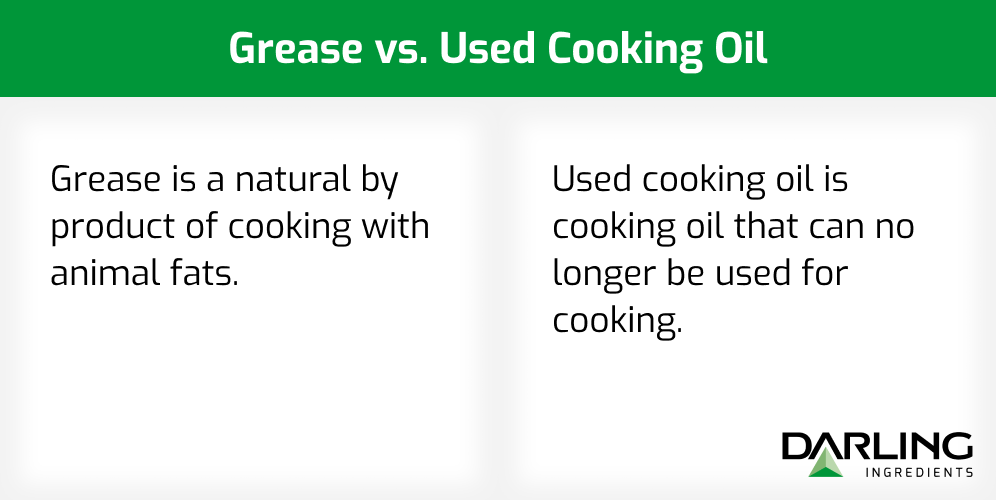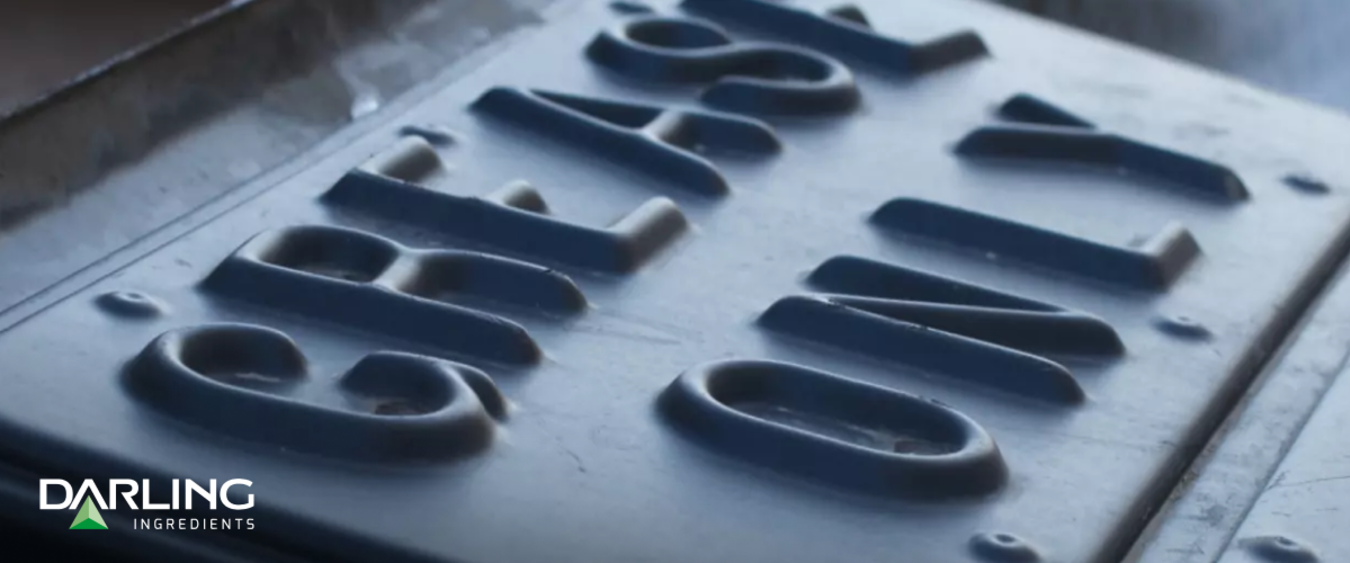We’re here to help you untangle the words and phrases that you’ll hear in the yellow grease industry.
Grease Vs. Used Cooking Oil
While often used interchangeably, used cooking oil and grease are not the same thing.
Grease is a natural by-product of cooking with animal fats. Think about cooking bacon. Afterwards, there’s a layer of residue at the bottom of the pan. That’s grease, and it’s important to manage it well.
Used cooking oil refers to cooking oil that can no longer be used in the kitchen. There may be too much food residue or it simply reached the end of its lifespan. It may be confusing, but within the rendering industry, used cooking oil can be referred to as yellow grease.
Cooking oil can be made with several ingredients including:
Vegetable oil
Peanut oil
Sunflower oil
Animal fat
You need to take special precautions when getting rid of grease and used cooking oil. It can be dangerous for the environment and your sewage system. That’s why using the proper used cooking oil and grease equipment is so important for your restaurant.

Used Cooking Oil Equipment
There is a lot of equipment used in the yellow grease industry. Now that you know the difference between grease and used cooking oil, let’s talk about the different kinds of equipment you’ll need.
Used Cooking Oil Containers
Used cooking oil needs to be a place to go once it leaves the fryer. That’s where used cooking oil containers come in. They are used to hold the oil before it can be collected and disposed of.
Used cooking oil containers can come in a variety of shapes and sizes.

Caddies, Pumps, Automation
A used cooking oil container would be useless without a way to transfer the used cooking oil to the container. As you may know, transporting oil of any kind can quickly become messy. That’s why it’s important to have a safe way to transport oil.
The first option for transportation is a direct pump. This allows for oil to be transferred directly into your container at the push of a button. It’s easy to use and it doesn’t require any employees carrying the oil to the container.
Oil transfer pump stations are similar to direct pumps, but they use a hose to collect the oil rather than a direct connection.
Caddies are typically used when there is a distance between the fryer and the container, usually used with outdoor bins. This option uses hoses to collect the oil into a small portable container, which is then deposited into the large container using a direct connection.
Choose the Best Used Cooking Oil Container
The right used cooking oil container will depend on your space and how much used cooking oil you produce. Darling Ingredients Canada makes a variety of used cooking oil containers meant for safe and easy storage. Our systems are thoughtfully designed with restaurants in mind.
When you partner with us, we’ll help you find the perfect container for your needs. We’ll conduct an on-site inspection and we’ll help you find the best setup for your needs.
Reach out today to get started.
Grease Management Equipment
Grease needs to be managed slightly differently than used cooking oil. How you manage your grease could keep you within local regulations as well as keep your kitchen clean, safe, and smelling good.
Here are some pieces of equipment used to manage grease.

Grease Traps
As we mentioned earlier, grease is not something you want going into your pipes or the sewage system. When it gets into the plumbing, it can cause major damage and earn you some hefty fines from the city.
Luckily, grease traps help stop grease from entering the sewage system. These systems are installed just under kitchen sinks and use a series of walls and irrigation techniques to trap oily grease.
In terms of their size, grease traps usually look like small boxes about the size of a mini fridge. They are intended for small to medium-sized kitchens and can handle a flow rate of 10-50 gallons per minute.
This kind of equipment is important for kitchens that handle grease of any kind as it helps keep the kitchen within local regulations.
Grease Interceptors
Grease interceptors do the same thing as grease traps but on a much larger scale.
These underground systems can handle a flow rate of 50 or more gallons per minute. For some kitchens, this is overkill, but large industrial kitchens or food producers need that extra capacity.
Rooftop Grease Containment Systems
Grease containment systems are yet another kind of grease management system. This system stops grease from escaping from vents and causing damage to your building and the environment.
Grease containment systems look similar to turbines and they’re installed on a restaurant’s roof. It acts as a ventilation system as well as a filter for grease. Without this filter, grease would be able to leak onto your roof, create a fire hazard, and harm the environment.
Other Forms of Grease Management Systems
Some other kinds of kitchen equipment will have “grease traps” built into them. Kitchen hoods for example will have grease traps built into them, but they shouldn’t be confused with the specific equipment called grease traps.
Use the Right Equipment
Knowing what equipment you need for your kitchen is a seemingly daunting task. Choosing the correct equipment will help your kitchen become more efficient. Let’s talk about whether or not your kitchen needs each of these forms of equipment.
Do I Need a Grease Trap or an Interceptor?
Chances are your local regulations will require you to have and maintain a grease trap. Most municipalities don’t want fat, oil, and grease (FOG) entering their sewage systems.
Typical restaurants will opt for grease traps. They don’t require any excavation and they’re much easier to maintain. If you’re a small to medium-sized restaurant you’ll want a grease trap.
Unless you’re managing a food processing plant or industrial kitchen, you won’t need a grease interceptor.
Remember to do your research and partner with companies who can offer service in case any of your equipment needs servicing or repair.
Do I Need a Used Cooking Oil Container?
Short answer, yes.
Cooking oil needs a place to go once it’s been used. Used cooking oil should not go down the drain nor should it go in a trashcan. Instead, it should be stored in a container until it can be properly recycled..
Your restaurant needs a place to store used cooking oil, why not partner with a company that can offer industry-leading containers as well UCO collection and recycling? Contact Darling Ingredients Canada to learn how our innovative solutions can benefit your restaurant.
